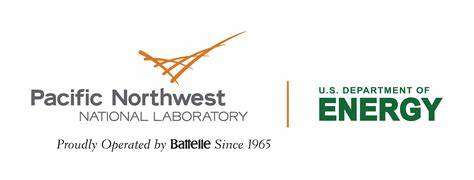Part 1 of 2 Parts
After the earthquake off the coast of Japan caused a tsunami that disabled the power supply system at the Fukushima Daiichi Nuclear Power Plant, three of the six nuclear reactors there suffered core meltdowns in the first seventy-two hours. The Fukushima nuclear disaster inspired computational scientists at the Pacific National Nuclear Laboratory (PNNL) look for evidence of future nuclear reactor accidents by tracking radioactive iodine after the breach of a nuclear plant reactor.
Most nuclear accidents release radioactive iodine into the atmosphere. The human body absorbs iodine from the environment and will take up radioactive iodine if it is present. When the cells of the thyroid absorb too much radioactive iodine, the development of cancer can be the result. Thyroid cancer is the greatest risk to human beings following a massive dose of radioactive iodine.
Jenna Pope is a PNNL data scientist. She is a computational chemist who has recently begun to work with deep learning to solve real-world chemistry problems. She said, “But it's very simple to prevent if you know radioactive iodine is coming your way. As a preventive measure, you can take potassium iodide tablets and prevent radioactive iodine from being absorbed.”
Pope led a team to study how radioactive iodine will react with water and other molecules in the environment. This study was part of the PNNL's Chemical Dynamics Initiative. It was published in the American Chemical Society's journal Omega. This study was made more difficult by that fact that the half-life of radioactive iodine is just eight days.
Pope said “It can be difficult to experimentally track where radioactive iodine is going because it disappears so quickly. So, we wanted to develop a system based on deep learning to predict which molecules radioiodine would end up in and in what concentration.”
Pope’s research team used a recurrent neural network (RNN), which is an artificial intelligence algorithm, in order to predict what reactions iodine would undergo with water and then what molecular evolution might occur. The research team used time-series-modeled data of chemical concentrations. Pope said that the RNN was able to predict how the concentration of the radioactive iodine would change over time. She added “We showed that you can actually use recurrent neural networks to track concentration changes over time and predict which chemical species will appear after an incident at a nuclear power plant.”
Pope believes that neural networks offer good surrogate models for chemistry forecasting problems in which data are available, but the underlying mechanisms are not known. She said that “The tool was a proof of concept that chemical evolutions can actually be estimated by this method. It's not necessarily limited to only nuclear iodine reactions. It depends on whatever data you train the network on.”
Pope went on to say that this RNN technique would be very useful in a real-world scenario in which researchers capture data in real time with atmospheric sensors to study the environmental transfer of iodine after a nuclear reactor incident. While it may not be possible initially to identify chemicals, their concentrations can still be tracked over time. RNNs could then be used to carry out accurate short-term forecasting of the unknown chemicals.
Please read Part 2
